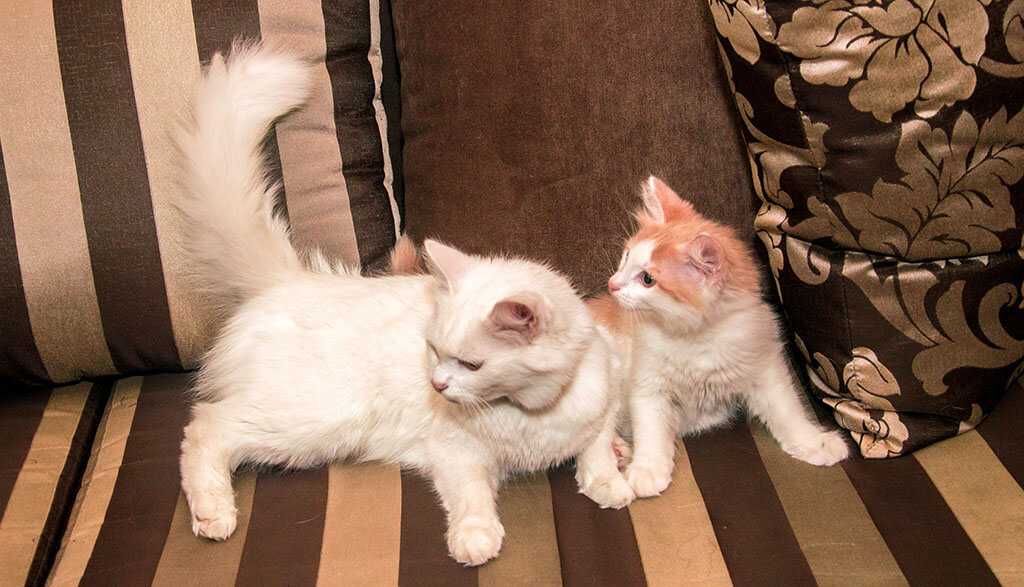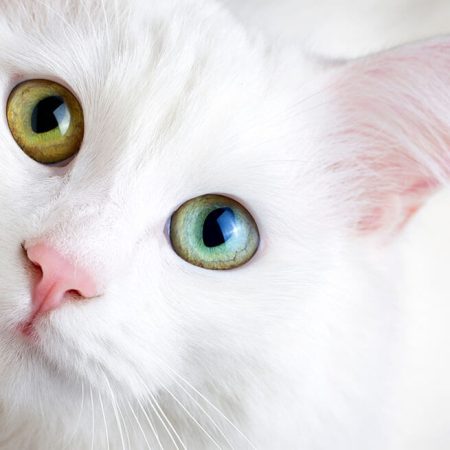The History of the Turkish Angora
Where does the Turkish Angora cat come from? The Turkish Angora is one of the oldest semi-longhaired cat breeds. This cat breed – the Turkish Angora – already bears its origin in its name: “Angora”. The Turkish capital was not called Ankara in former times, but Angora. So it originates from Turkey. In the 17th century, the first Turkish Angora also came to Europe via the trade routes. Compared to the short-haired European cats of the time, these cats with their half-length, silky fur were true exotics! Anyone who thought anything of themselves owned such a lovely beauty.
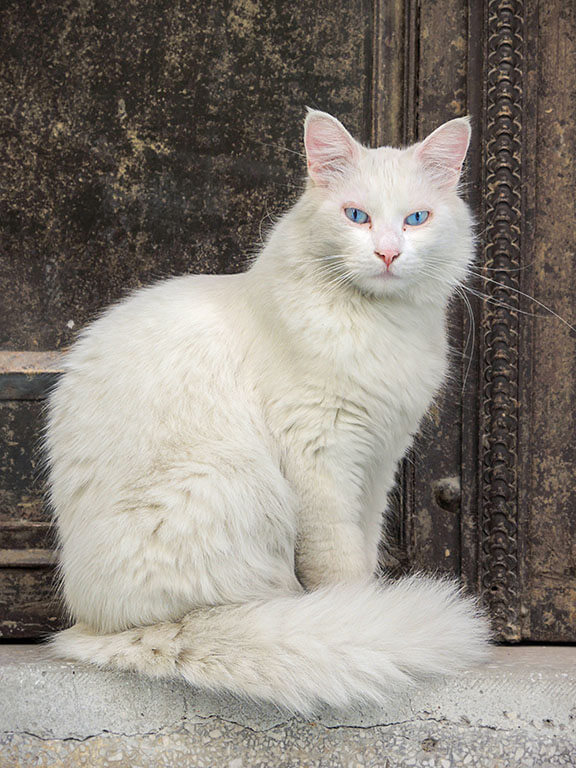
Appearance of the Turkish Angora
What does a Turkish Angora look like? The Turkish Angora is a muscular cat with a light bone structure. She appears athletic, but graceful. Their long legs are slightly higher in the back than in the front, which raises their back slightly towards the bushy tail. Like the Siberian Forest Cat and the Maine Coon, the Turkish Angora has a semi-long coat, which has obtained its length naturally, not through breeding. On the tail, around the neck and on the hind legs the coat is slightly longer than on the rest of the body. There are additional tufts of hair between the paw pads.
Turkish Angora Size
How big do Turkish Angora cats grow? With an average shoulder height of up to 25 cm and a body length of up to 35 cm, the Turkish Angora cat belongs to the medium to large cat breeds. The males – the Turkish Angora males – are somewhat more muscular, broader and also a bit larger than the females of this breed.
Weight of the Turkish Angora
Turkish Angora females are somewhat more delicate and smaller than males, and they weigh about 2.5 to 4 kg when fully grown. The males are usually a little heavier than their female counterparts due to their more massive build: about 3.5 to 5.0 kg is shown on the scales when a Turkish Angora male is on the weighing machine.
Coat of the Turkish Angora
Fans of beauties with longer fur will get their money’s worth with a Turkish Angora cat! The fine, silky coat of this breed is wonderfully soft and lies close to the body. The lush tail looks almost like that of a fox: dense and bushy! The coat on the belly is wavy. The coat care of the Turkish Angora is nevertheless manageable, as there is no undercoat.
Coat colour
White is the original, traditional colour of the Turkish Angora. Cats with white fur then have blue, yellow – and even bicoloured eyes! In the meantime, however, the Turkish Angora is also bred in many other colour shades: Black, red, cream and blue. The coat is plain or mackerel, brindle or spotted.
Coat length
What is the length of the coat of the Turkish Angora? These cats have a semi-long coat. When grooming, you should therefore use combs and brushes that are specially made for this coat and do not pull: for semi-longhair and longhair cats, there are extra brushes and combs with movable teeth in well-stocked shops.
Drawing of the coat
The first Turkish Angora cats were always solid white. For a long time, only the white varieties were officially recognised. Today these cats exist in many natural coat colours with different markings. Also representatives of this breed as black-tortie-harlequin, cream mackerel, black-silver spotted or blue mackerel with white are respected and popular.
Eyes of the Turkish Angora
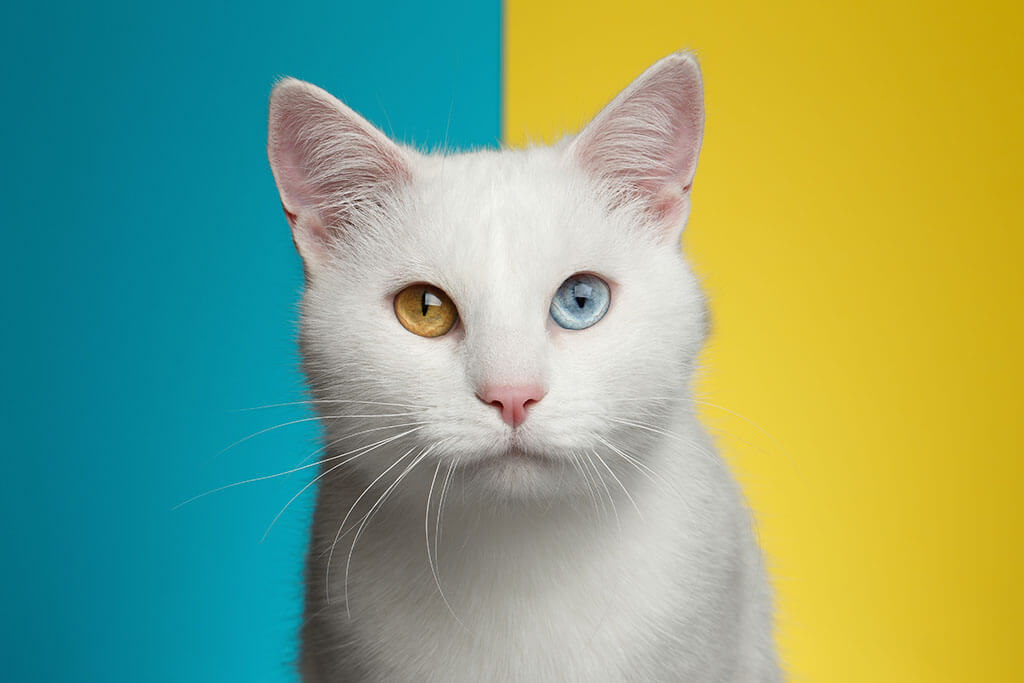
A feast for the eyes! The Turkish Angora has wonderfully large, slanted almond-shaped eyes. All eye colours are possible – from amber to blue to emerald green. In completely white cats a special colour feature may occur: “odd-eyed”. A Turkish Angora then has two different coloured eyes – for example one yellow and one blue eye:
Special features of the Turkish Angora
The Turkish Angora appreciates company, is playful and very affectionate. Cats don’t like to be alone, but this cat breed has great grief all alone. She needs connection and likes to be the centre of attention. She follows her favourite person faithfully like a woof. Extensive cuddling and uplifting play should definitely be on the agenda! She needs variety and gets to the bottom of everything; curious and resourceful as she is, she can even open doors if she gets it into her pretty head….
Characteristics of the Turkish Angora
Among the special characteristics of the Turkish Angora are her aesthetic appearance and the two-coloured eyes of the white representatives of this breed. Nevertheless, she is not a diva, but a real beauty with charisma. A rather lively, fearless cat, which is not only beautiful to look at, but with its uncomplicated nature is a very pleasant housemate. A perfect house and yard cat who charmingly enriches “her” family with her own style.
Character of the Turkish Angora
Whoever decides on a Turkish Angora should have enough time and desire to spend time with her. She wants to be part of the whole – not only when cuddling on the couch – but also otherwise. Everything that is new is thoroughly examined by this cat. What she likes is completely taken over: this applies to new furniture as well as to friends and visitors: they are closely examined, extensively sniffed and pawed at.
Price of the Turkish Angora
You wouldn’t think it, but in our animal shelters there are not only strays and emergency cats, but also more and more pedigree cats that would like a new home. If you can’t find your Turkish Angora in an animal shelter, please only buy it from a really serious and certified breeder! The price for a Turkish Angora from a good home is about 800 Euros.
The breeding of the Turkish Angora
The breeding of the Turkish Angora is recognised and certified according to FIFe category II, TUA (Turkish Angora); GCCF 62. Originally only the white variety was bred in Turkey. The Turks appreciate and love these white cats so much that their export was strictly limited for a long time. Nevertheless, individual specimens were repeatedly exported. Since the 1950s, the Turkish Angora has also been bred in the United States. From there it started its triumphal procession throughout Europe.
Things to know about husbandry and care
As the coat of the Turkish Angora does not tend to mat, grooming takes relatively little time. There is no stopping a Turkish Angora once her curiosity is piqued! She wants enough space and opportunities to explore everything, but in a cat-friendly and safe setting. She needs a cat buddy: cuddling, playing and also roughhousing if wanted, this is a blast with conspecifics, no human will ever manage this like another cat!
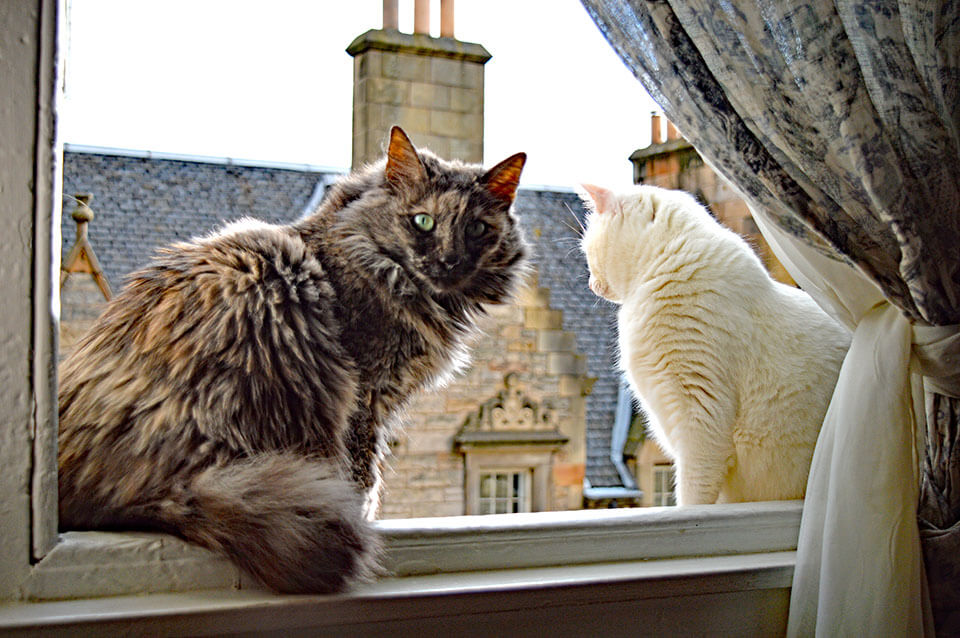
The Turkish Angora Kitten
In one and the same litter the Turkish Angora kittens can all look the same, but also quite different: even a completely white Turkish Angora cat mother does not necessarily have only snow-white kittens. This is because certain traits in cats are passed on in a recessive or dominant form. Some of the dominant traits only come into play if another gene is also present, which then finally sets the other one in motion.
Typical diseases of the Turkish Angora
Are Turkish Angora cats susceptible to diseases? The Turkish Angora is a very robust breed. However, it can be prone to diseases, which are especially typical for the special colour variety – white. When white breeds are mated with each other, the offspring may have poorer hearing and may not always keep their balance. Breed-specific ataxia may occur, affecting kittens in particular; they cannot coordinate their movements like healthy cats.
Life expectancy of the Turkish Angora
How old do Turkish Angora cats live? With a life expectancy of 12 years, the Turkish Angora cat is a tad below the average age of a cat. However, a Turkish Angora can also become quite older. Many of the natural breeds are among the oldest cats, which have even been immortalised in the Guinness Book of Records! The Maine Coon cat “Rubble” saw the light of day in 1988 and only made his way over the Rainbow Bridge at the age of almost 32. So there is definitely room for improvement!
